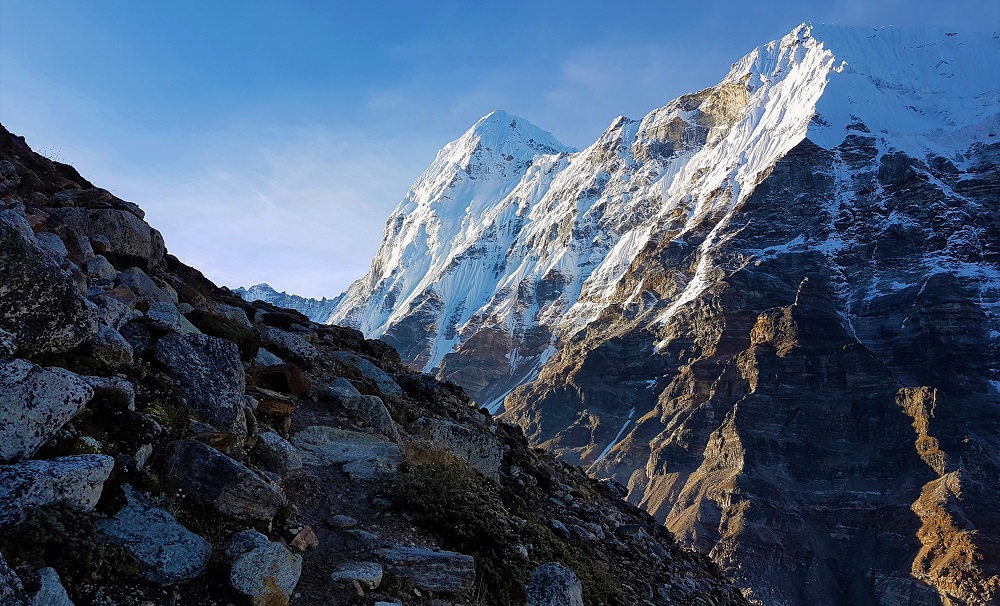Everything you need to know about Pangpema | Interesting things about Pangpema
Pangpema, also referred to as Kanchenjunga Base Camp North, is a remote and significant location nestled in the Kanchenjunga region of Nepal. It serves as the primary base camp for mountaineers and trekkers embarking on expeditions to conquer the mighty Mount Kanchenjunga, which stands as the third highest mountain in the world.
Situated at an altitude of approximately 5,140 meters (16,863 feet), Pangpema offers a mesmerizing panoramic view of the Kanchenjunga massif and the majestic peaks that surround it. The journey to Pangpema is a challenging yet incredibly rewarding trek, taking adventurers through diverse landscapes that range from lush forests to high-altitude plateaus and awe-inspiring glaciers.
The trek to Pangpema or Kanchenjunga North Base Camp typically commences from Taplejung, a town in eastern Nepal, and winds its way through picturesque villages and scenic alpine meadows. As trekkers ascend, they are treated to awe-inspiring vistas of the Himalayas, including magnificent snow-capped peaks such as Jannu, Yalung Kang, and, of course, the mighty Kanchenjunga itself.
Upon reaching Pangpema, trekkers are filled with a sense of awe and accomplishment as they stand at the base of one of the world's highest mountains. The base camp is situated in a location surrounded by breathtaking beauty, with towering glaciers and cascading icefalls adding to the dramatic scenery.
Pangpema Base Camp offers an excellent opportunity for acclimatization and soaking in the natural wonders of the region. Trekkers can spend time exploring the nearby glaciers, marveling at the turquoise waters of the Pangpema Lake, or simply basking in the serenity and remoteness of the environment.
For those with mountaineering ambitions, Pangpema serves as a launching point for the ascent of Mount Kanchenjunga. Climbing the mountain is a highly challenging and technically demanding endeavor, requiring extensive experience, mountaineering skills, and proper equipment. Due to its remote location and the considerable difficulty of the climb, Kanchenjunga attracts fewer climbers compared to more frequented peaks like Mount Everest.
Beyond its natural and mountaineering appeal, Pangpema and the entire Kanchenjunga region hold cultural significance. The local communities residing in the area have their distinct customs, traditions, and ways of life, which are deeply influenced by their proximity to the Himalayas and their Tibetan heritage.
Overall, Pangpema stands as a destination that offers trekkers and mountaineers an unforgettable experience amidst the grandeur of the Himalayas. It is a place of immense natural beauty, adventure, and cultural richness, drawing individuals seeking to test their limits, immerse themselves in awe-inspiring surroundings, and be captivated by the majestic allure of Mount Kanchenjunga and its awe-inspiring surroundings.




.jpg)



